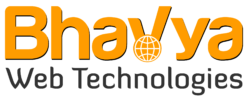Entering the world of web development can be both exciting and overwhelming. With so many technologies, frameworks, and tools available, beginners often struggle to decide where to start.
Whether you want to build personal projects, freelance websites, or kickstart your tech career, having the right tools will make your journey smoother, faster, and more enjoyable.
In this article, we’ll explore the essential web development tools every beginner should know — from coding editors to debugging and deployment platforms.
1. Code Editors – Your Workspace for Writing Code
A code editor is where the magic begins. It’s the tool you’ll use to write and edit HTML, CSS, and JavaScript — the foundation of web development.
🔹 Popular Choices:
-
-
- Visual Studio Code (VS Code): Free, fast, and packed with extensions for HTML, CSS, JavaScript, and frameworks like React or Node.js.
- Sublime Text: Lightweight and highly customizable.
- Atom: Beginner-friendly, open-source editor with great community support.
-
💡 Tip: Install extensions like Prettier (for formatting) and Live Server (for instant browser preview) to boost productivity.
2. Web Browsers and Developer Tools
A good developer knows how to test, inspect, and debug their work directly in the browser.
🔹 Best Options:
-
-
- Google Chrome DevTools: Built-in with Chrome, it allows you to inspect elements, debug JavaScript, and monitor performance.
- Mozilla Firefox Developer Edition: Offers tools tailored for developers, including advanced CSS grid inspection.
-
🧠 Pro Tip: Learn how to use the Console and Network tab — they’ll save you hours of debugging time.
3. Version Control Systems
Version control helps you track changes in your code and collaborate with others — a must-have for every developer.
🔹 Git & GitHub
-
-
- Git: Tracks every version of your project.
- GitHub: A cloud-based platform to host and share your repositories.
- With Git, you can experiment confidently knowing you can always revert to a previous version.
-
📦 Example commands:
git init
git add .
git commit -m “Initial commit”
git push origin main
4. Front-End Frameworks & Libraries
Frameworks simplify the process of building beautiful, responsive websites.
🔹 For Beginners:
-
-
- Bootstrap: Great for fast, responsive designs without writing much CSS.
- Tailwind CSS: Utility-first framework that gives you full control over styling.
- React.js: A powerful JavaScript library for building interactive user interfaces.
-
🎨 Tip: Start with HTML and CSS basics, then move to frameworks once you’re comfortable.
5. Package Managers
Package managers help you install and manage third-party libraries easily.
🔹 Common Tools:
-
-
- npm (Node Package Manager): Comes with Node.js and helps manage JavaScript packages.
- Yarn: Faster alternative to npm with improved dependency management.
-
⚙️ Example:
npm install bootstrap
6. Preprocessors & Build Tools
As projects grow, managing code manually becomes inefficient. Preprocessors and build tools automate repetitive tasks like compiling CSS, minifying files, and bundling scripts.
🔹 Popular Tools:
-
-
- Sass: Adds variables, nesting, and mixins to your CSS.
- Webpack: Bundles all your project files into one efficient package.
- Gulp: Automates workflows like image optimization and file watching.
-
🔁 Bonus: Combine Sass with Gulp for smooth automation.
7. Design and Prototyping Tools
Before coding, it’s helpful to visualize your layout. Design tools help you create wireframes and prototypes quickly.
🔹 Recommended Tools:
-
-
- Figma: Collaborative design platform for UI/UX design.
- Adobe XD: Perfect for designing and testing interactive prototypes.
- Canva: Great for quick graphics, logos, or web visuals.
-
🎯 Pro Tip: Always design with user experience (UX) in mind — not just visuals.
8. Online Learning and Code Testing Platforms
Practicing is key to improving your web development skills.
🔹 Try These:
-
-
- CodePen: Write and preview HTML, CSS, and JS snippets online.
- JSFiddle: Great for testing and sharing small code examples.
- FreeCodeCamp & W3Schools: Perfect learning platforms for structured web dev tutorials.
-
💻 Challenge yourself: Recreate simple websites using only HTML, CSS, and JS to sharpen your skills.
9. Hosting and Deployment Tools
Once your project is ready, it’s time to make it live!
🔹 Easy Hosting Platforms:
-
-
- Netlify: Simple drag-and-drop deployment with continuous updates.
- Vercel: Ideal for React, Next.js, and front-end apps.
- GitHub Pages: Free hosting for personal projects.
-
🌍 Tip: Connect your custom domain to make your project look professional.
Conclusion
Becoming a web developer doesn’t happen overnight — but the right tools can make the learning curve much smoother.
Start simple:
-
-
- Learn the basics (HTML, CSS, JS).
- Master your tools (VS Code, Git, Browser DevTools).
- Build and publish small projects.
-
With consistency and the right toolkit, you’ll go from beginner to confident developer faster than you think.
🚀 Remember: Tools enhance your workflow — but your creativity and problem-solving skills build your career.
